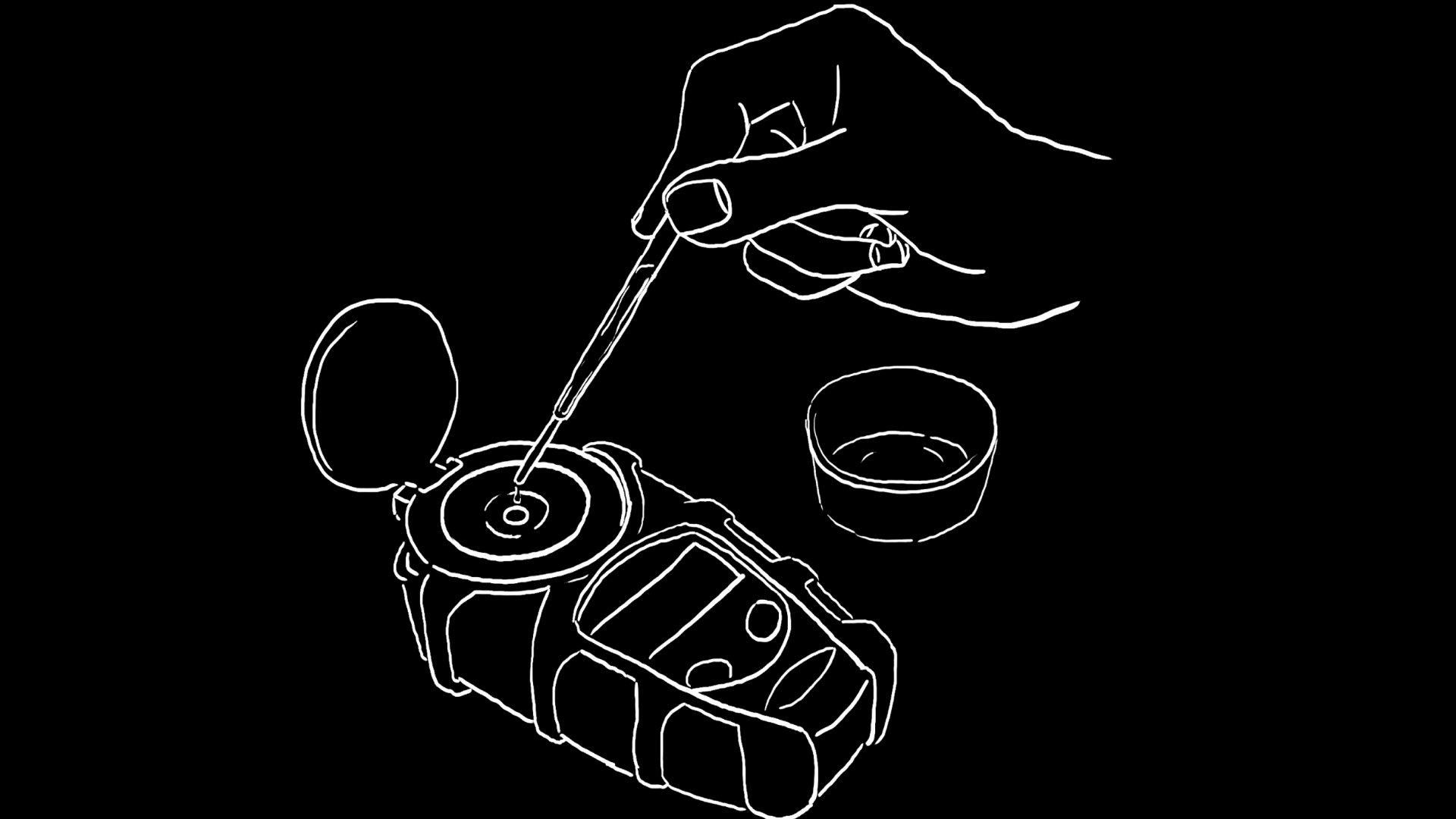# Barista Guides | Refractometry

Coffee is made up of one part water and one part dissolved organic coffee material. We can measure the amount of this dissolved coffee material by using a refractometer. This tool works by measuring the refraction of light through a liquid.
The angle that the light bends at determines this measurement and is given to us by the refractometer as a percentage of Total Dissolved Solids (TDS%). This number tells us how much of the brew is made from dissolved coffee material. In other words it tells us the strength or concentration of flavour in a coffee beverage, meaning that higher TDS% can taste rich or intense, whereas lower TDS% can taste weak and watery.
OPERATING THE REFRACTOMETER
- Wipe the lens with a medi-swab
- Give the coffee a really good stir so as to evenly distribute the dissolved material throughout the brew
- Take a sample of the espresso at room temperature. This is important as compounds in hot liquid will vibrate faster and harder than in cool liquid, making the reading inaccurate
- Place a syringe filter on the end of the syringe. This filters out any undissolved particles which could interfere with the reading. This step is only required for espresso readings
- Cycle through the options until you reach ‘Espresso’ or ‘Coffee’ and press ‘Go’
- A number should come up on the screen after a little while. Keep pressing ‘Go’ until the number stays consistent
- You now have an accurate measurement of theTDS% of the espresso!
- Wipe the lens with a clean towel and then with a medi-swab.
We can use this reading in conjunction with a complex formula to tell us how much soluble mass we’ve extracted from the dry coffee, given as Extraction Yield (EXT%). In other words this is the percentage of coffee ‘stuff’ we’ve taken out of our coffee bed. Too much and we get an over-extracted coffee, not enough and we get under-extracted coffee.
For ease of use, we have a tool that works the formula out for us that we can download onto our phones called VST Coffee Tools (available on the App Store (opens new window) or Google Play Store (opens new window)). This app also calculates things such as how much liquid is retained in the coffee bed & different brew methods used.
CONTROLLING THE NUMBERS
We can control TDS% & EXT% by focusing on three main things: dose weight, beverage weight/brew water volume and contact time.
Dose Weight This will affect the amount of raw material we have to work with and will make it easier or harder to get a higher TDS%. Higher weights mean higher TDS% are easier to achieve but can be extremely wasteful and often just result in a bigger beverage.
Beverage Weight (BEV) also known as Yield Weight & Brew Water Weight (BW) This will either mean more or less water has been used to brew with. This will impact EXT% dramatically and is a very important variable. Higher numbers mean more water has passed through the coffee and therefore we have taken more solubles out. By using more water though, our brew will become diluted and our TDS% will go down because there’s more water and less dissolved coffee. This is why it’s important to keep a balance betweenEXT% & TDS% so as to have a sweet, balanced coffee but retain a pleasing mouthfeel & body.
Contact Time This influences both EXT% & TDS%, but most noticeably influencing TDS%. The longer that water is in contact with coffee the more material is dissolved in the cup, bringing our TDS% up and also indicating that we’ve extracted more solubles. Higher contact times can be utilized to increase theTDS% of a brew. We can control this by making our grind finer or coarser.
When dialing in with a refractometer it can be easy to arrive at a reading that worked previously without tasting the coffee, but it’s very important to always taste first and use the refractometer second to give us objective information as to why our coffee tastes a certain way and what we can do to improve it.